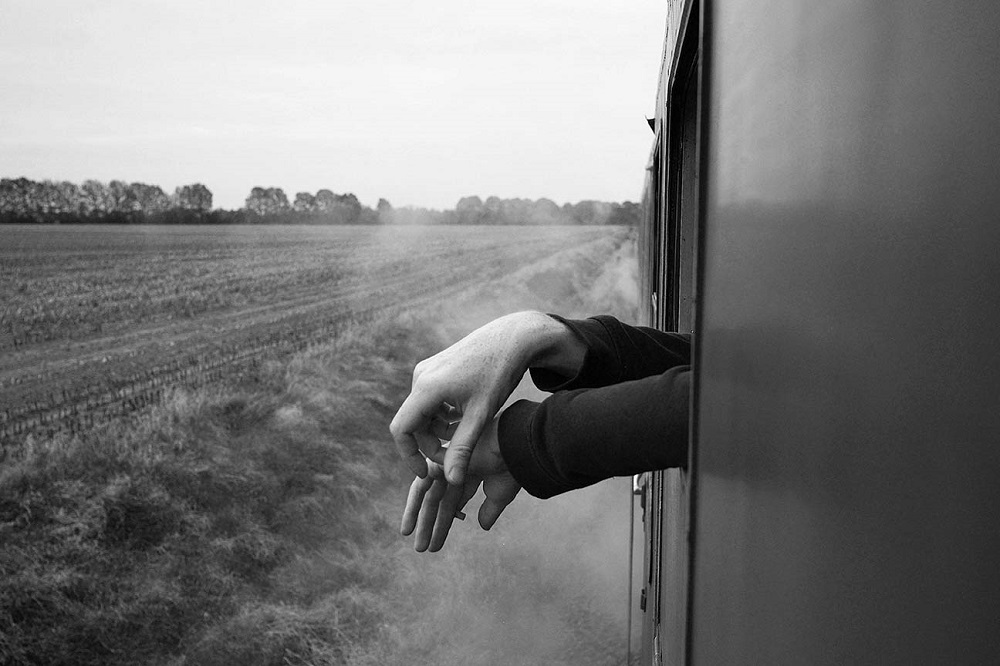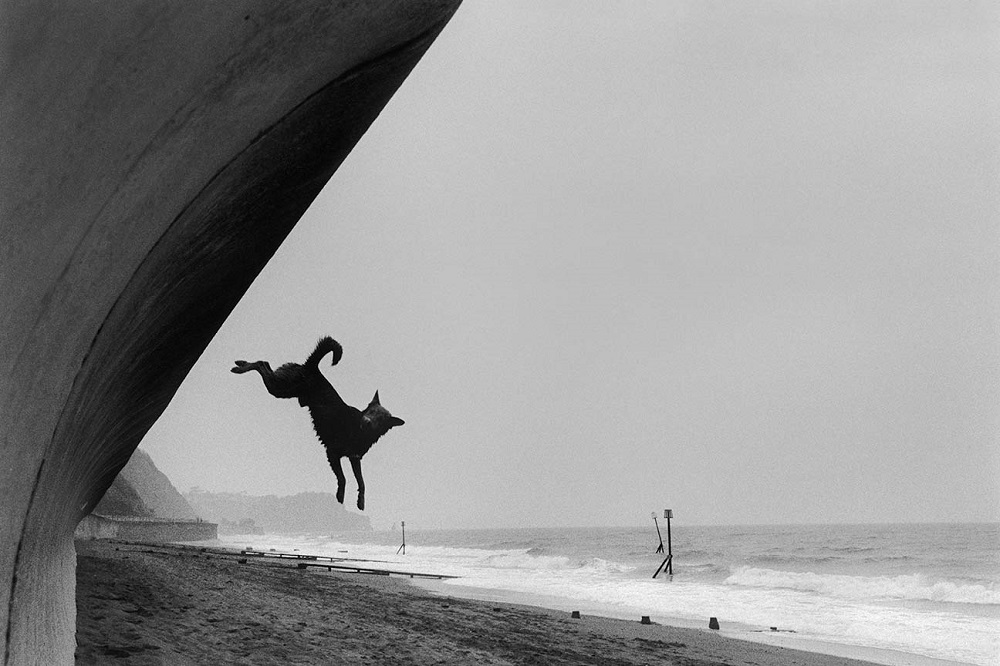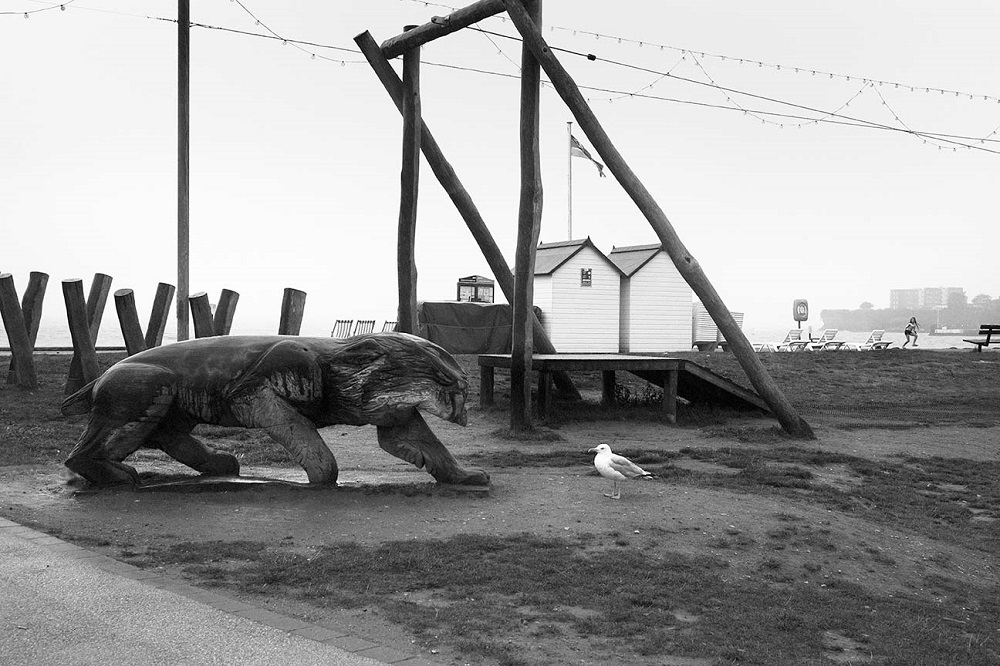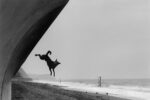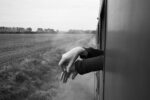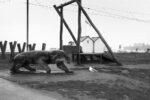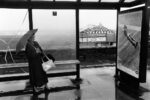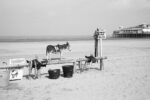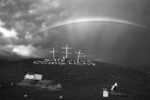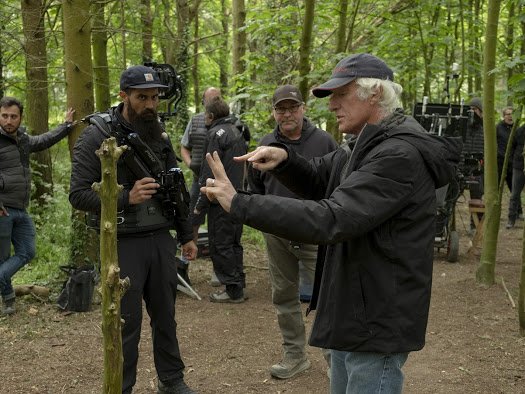
Late last year saw the release of a brand new book of photography by legendary cinematographer Roger A. Deakins. The appropriately titled Byways is Deakins’ first book of photos, and it’s certainly a striking departure from his grandiose film work, which includes personal favorites of mine such as Sid and Nancy, The Shawshank Redemption and Barton Fink.
More recently, Deakins has been busy shooting epic films like Sicario, Blade Runner 2049 and 1917, which are all career-bests from a career of bests. In fact, the latter two films earned him Oscars. And yet, as intricate and complex as those productions were, when I first looked upon the pages of Byways, I was taken with its simplicity and charm. Meditative and inviting, it is a beautiful collection of black-and-white images. Evoking a mood that is timeless and lasting, it’s the kind of photography book that could stop you in your tracks with its lush imagery.
Late last year, I connected with Deakins via Zoom to discuss Byways. Our conversation below has been edited for clarity.
Below the Line: How did you come up with the title of the book?
Roger A. Deakins: We were struggling with the title and, at one point, I just wrote down the expression ‘The highways and byways.’ I thought Byways, that’s about right, [because] there’s no particular focus to the photos. They are just sketches in a way. I think of them as just sketches that I’ve done over the years.
BTL: How did you get started taking pictures?
Deakins: I started at Art College. I used to paint in the evening a lot. When I was a teenager, I really didn’t know what to do with my life. I grew up in Torquay, a seaside town in Southern Devon — I love the place. I always did, but I couldn’t see myself spending my life there. My father was a building contractor and he had expected me to work in the business, and I could not see myself doing that. It was the ’60s and I didn’t know what to do, so I went to Art College. It was at Art College where I really discovered photography. My painting was very naturalistic, not abstract, so really, it made sense for me to go into photography. One thing led to another.
BTL: Who inspired you?
Deakins: Roger Main, who taught at the college, was a big inspiration. Also, Bill Brandt was an inspiration.
BTL: When do you decide to take a picture?
Deakins: I don’t know. I find it really hard. Even wandering around, I find it hard to connect. It’s usually the little things that attract me. I’m much more interested in simplicity, isolation, [and] in sparse and lonely places.
BTL: Please tell the story of the Jumping Dog photo, as it’s very interesting looking.
Deakins: The dog’s owner was throwing a stick over the promenade. I took a few pics and this one dog jumped and the dog looked at the camera. Because it looked at the camera, it’s special. It’s not looking where it’s going. An amusing moment.
BTL: And the one of the woman looking at the nudie ad at the bus stop?
Deakins: I like that photo a lot. I go to that seaside town often. I remember that day, it was a particularly rainy day and I saw the poster and the shellfish restaurant (in the background) and the framing of the bus stop, and I was just waiting for some life in the shot. I took the photo with a couple of other people but then I almost gave up, and then the woman arrived with the umbrella and she’s looking at the poster and I don’t know if she was looking at it in shock, or longing to be where the girl was in the sunshine.
BTL: What about the photo of the Homesick Ghosts sign?
Deakins: I was living in Albuquerque, New Mexico while working on Sicario, and on the weekends I would walk the neighborhood [and explore]. I’d seen this sign a few times, and when the guy was just standing there and seemingly for no reason, I took a couple of shots at different angles, but the one in the book is the one I like most. It’s just this solitary figure, and there’s something about it that’s strange, like, was he the homesick ghost?
BTL: Now that the book has been published, will you continue to take photos?
Deakins: Got one the other day. It was a London bus and the whole bus was painted with a movie ad, a big alien poster. I don’t remember what film, and there was only one person on the bus, but they were silhouetted and they had a mask on, and it was such an odd image.
BTL: All of the images in Byways are black-and-white, so why do you prefer black-and-white photography?
Deakins: Black-and-white images evoke mood best. For me, color is difficult. Several photographers use it well, but I find it really hard. Color is a distraction. Black-and-white is simple and my photos are simple. There are only a few elements. I think it works better. It’s so much more about the shapes and the composition.
BTL: And finally, how did you connect with your publisher?
Deakins: We looked for a publisher for a while, but mostly they wanted a book about Cinematography until we found Damiani. They saw the photos and said ‘yes, it didn’t need to be about film.’ They were really brilliant. They want to do another. Maybe I should spend some more time taking photos…
All images courtesy of Deakins and Byways publisher Damiani.

